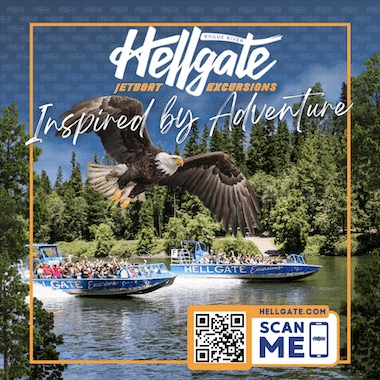OREGON OUTBACK DARK SKY NETWORK
About the OODSN and Preserving the Night Sky

Origins and Formation of the Oregon Outback Dark Sky Network
The Oregon Dark Sky Network (ODSN) is an ad-hoc group of Dark Sky advocates representing several federal, state, and local agencies, non-governmental organizations, tourism agencies, chambers of commerce, businesses, and private individuals. The ODSN has been collaborating for over four years. The group has established a goal of an eventual 11.4-million-acre sanctuary spanning portions of three counties and managed under one Lighting Management Plan (LMP) with a joint outreach program. All work by the Network has been in the effort to work with DarkSky International’s Dark Sky Places Program to explore the certification of some kind in the Oregon Outback.
The area frequently referred to as the “Oregon Outback” encompasses much of Southeastern Oregon. It is situated in the northern extent of the Basin and Range Province of the Western United States and is sparsely populated, very remote, and mostly comprised of public lands. It’s a high desert area characterized by sage scrub and abrupt changes in topography that alternates between narrow faulted mountain chains and flat, arid valleys and basins. No designated National Parks, National Monuments, or Oregon State Parks are located within the boundaries of the nominated area and planned expansion area of the Oregon Outback International Dark Sky Sanctuary (OOIDSS). However, there is abundant public land in the Outback set aside for scientific, natural, educational, cultural, heritage, and public enjoyment.
Anyone who has ever been to the southeastern area of the state of Oregon in the Pacific Northwest Region of the United States can firmly attest that the sky there is dark – very dark – a darkness that sky observers call “inky or velvety black.” Few ever experience this night sky quality in their lifetimes. It’s a quality that sets the bar for amateur and professional astronomers alike. Is it any wonder that the sky would be that way when the three-county area of Lake, Harney, and Malheur, an area more than two times the size of New Jersey, has a population of only 47,544? It’s also quite remote from any sizeable city. About 36% of that population lives in the three Malheur County cities of Ontario, Nyssa, and Vale. The combined population of those three cities is greater than the combined population of all of Lake and Harney Counties.

This remote area in the high desert area of Oregon is often known as “The Oregon Outback.” Western Australians might relate to this extraordinary remoteness and sense of wilderness, but even Pacific Northwesterners are astounded on their first visit to the region. Experiencing a scarcity of electric lines and buildings is unusual for the average person. This level of darkness and remoteness stirred several people’s imaginations back in 2018 to nominate the Outback to the International Dark-Sky Association’s (IDA) International Dark Sky Places (IDSP) Program.
How the Network First Came Together
Nomination efforts were begun by representatives from diverse organizations, including Travel Southern Oregon, Rose City Astronomers, Portland Audubon, PLAYA at Summer Lake, and a few independent stakeholders. Bob Hackett of Travel Southern Oregon arranged meetings with stakeholders in Lake County. PLAYA held a dark sky gathering event in September 2019. Portland Audubon held a dark sky event near Malheur National Wildlife Refuge and held
meetings with BLM Burns District staff to consider a nomination of Steens Mountain Wilderness Area in Harney County. The Friends of The Owyhee (FOTO) in Malheur County also began thinking about a nomination. In support of broad collaboration, in October 2019, several parties formed the Oregon Outback Dark Sky Network. The ODSN was formed as a “voluntary grass-roots initiative to build an alliance of communities, businesses, local governments, ranchers, state and federal agencies, tribes, and OregonOutback night sky enthusiasts to support a set of shared principles resulting in mutual community benefits and the long-term conservation of our starry night heritage.” Early ODSN partners included Travel Southern Oregon, the Lake County Chamber of Commerce, PLAYA at Summer Lake, Rose City Astronomers, DarkSky Oregon Chapter, the Lakeview Community Partnership (LCP), and a few independent dark sky advocates. The ODSN focused its advocacy efforts in the Lake, Harney, and Malheur Counties tri-county areas. In 2021, DarkSky staff encouraged ODSN to submit a sanctuary nomination.
Moving Forward with a Sanctuary Nomination
Dawn Nilson, a professional natural resources manager, the Dark Sky Preservation Director for Rose City Astronomers, and a co-founder of DarkSky Oregon proposed an idea. The idea (often referred to as “the whitepaper”) described the project area, identified issues, and promoted the features of a proposed solution towards a nomination. Instead of multiple competing nominations sought independently in a region with limited human and capital resources, the whitepaper alternatively proposed a collaborative effort to nominate a single-identity, region-wide, dark sky sanctuary on multiple public lands as a cohesive course of action to provide an efficient, streamlined, dark sky nomination in Southeastern Oregon that cultivates collaborative partnerships, promotes community-appropriate recreation opportunities, respects public and private lands, and leverages the opportunity to create the world’s largest international dark sky place.
Data Collection
DarkSky Oregon initiated the Oregon Sky Glow Measurement Network, a sky quality monitoring program. The program presently monitors 44 sites within Oregon and continues to expand. ODSN has partnered with DarkSky Oregon on this program, whereby they regularly download data from 7 sites throughout the Outback. These monitoring stations will help not only verify sky quality qualification for sanctuary status but also mark trends over time.
Community Events and Outreach Programming
The ODSN has fostered an appreciation for the night skies through educational and interactive events. These activities, spearheaded by entities like Friends of the Owyhee (FOTO), Portland Audubon, Travel Southern Oregon, and local chambers of commerce and libraries, aim to combat light pollution and promote dark sky preservation. The initiatives have included various events such as the Stargazing & Natural Night Skies Webinar Series led by an astronomy educator and the distribution of Night Sky Adventure Kits across regional libraries. These kits, come complete with sky-quality meters and stargazing tools. Additionally, film screenings and dark sky gatherings serve to engage the community with the cultural and environmental importance of dark skies, featuring educational panels, star parties, and presentations by experts in the field.
The reach and impact of these programs are evident in the variety of settings and formats used to connect with people of all ages. Educational offerings like the StarLab and library programs introduce children and the general public to astronomy and dark sky conservation. Events like the Lake County Tour de Outback and Harney County Migratory Bird Festival integrate dark sky awareness into broader community activities. The participation and support from the Oregon Governor’s Conference on Tourism and the Oregon Outdoor Recreation Summit highlight the value of dark skies as an asset for tourism and local economies.
Dark Sky Education
Education and outreach are critical components of the OODSN’s work. Outreach is necessary to inform communities within and surrounding the proposed Sanctuary on:
- How to practice outdoor lighting in a manner that protects the western night sky heritage of the Outback
- Why it is important to practice outdoor lighting in a manner that protects the western night sky heritage of the Outback
- informing residents and visitors of safe and appropriate places to observe best the Sanctuary’s pristine dark skies
- informing residents and visitors of the special wonders and benefits of the night sky, such as astronomy, nocturnal habitat, story-telling, health and safety, energy efficiency, and artistic inspiration
- dispelling myths about the need for abundant artificial light at night, such as crime prevention.
Education has occurred within the Outback for the past few years, and with a DarkSky certification in place, it will expand into the future. Outreach occurs via several media outlets, particularly social media, in the form of Facebook posts, news articles, blog posts, and emails. Even during the COVID-19 pandemic, outreach occurred via stakeholder Zoom meetings and webinars for special events.
Oregon Outback International Dark Sky Sanctuary (Lake County, Phase 1)
In March 2024, Dark Sky International awarded the Oregon Outback Dark Sky Network with an approved Dark Sky Place in the Oregon Outback International Dark Sky Sanctuary (Lake County, Phase 1). OODSN has worked with dark sky advocates in Harney and Malheur Counties to help build awareness for dark sky initiatives and potentially expand the borders of the Sanctuary as agencies see fit. Follow the network on Facebook to learn how you can support these efforts.

What is Light Pollution
Light pollution refers to the excessive, misdirected, or intrusive artificial light that is scattered in the environment, particularly in the night sky. In the context of the Oregon Outback, light pollution is a significant concern because it diminishes the region’s naturally dark skies, which are a valuable resource for both ecological integrity and human appreciation of the night sky.
The Oregon Outback, with its expansive and sparsely populated areas, traditionally enjoys some of the darkest skies in the United States, offering spectacular views of stars, planets, and the Milky Way. However, the encroachment of artificial lighting from developments, streetlights, and private properties can obscure these celestial views. The impact of light pollution extends beyond just astronomy; it can disrupt wildlife patterns, affecting nocturnal animals and bird migrations, and can also have negative effects on human health by disturbing natural circadian rhythms.
Efforts in the Oregon Outback to reduce light pollution involve promoting the use of dark sky-friendly lighting fixtures that minimize glare and reduce light spill into the sky. Educational groups, such as the Oregon Outback Dark Sky Network, aim to raise awareness about the importance of maintaining clear skies to benefit all who rely on the rhythms of the universe. Through such community engagement and proactive measures, work is being done to preserve its dark skies as an environmental treasure.




